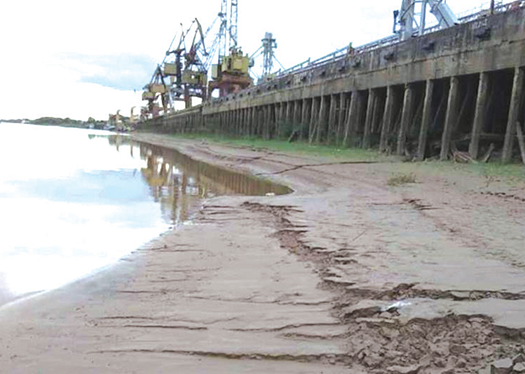
Drought-induced declines in water levels idled operations in the Paraná River port of Rosario, shown here in August. (Photo courtesy of National Water Institute)
Appeals to citizens to restrict their water consumption. Declining hydropower generation. Scant water for crops and livestock. Declining honey production. More forest fires. River-transport bottlenecks. Shrinking volumes of artisanally-caught freshwater fish. The list goes on—as does the drought that has punished natural lands, agricultural regions and communities in South America’s Paraná River Basin for over two years. The problem’s seriousness is reflected in the Paraná’s water level, which on Aug. 12 reached its lowest point since starting to decline in late Dec. 2019—the lowest, in fact, since 1944. The Paraná River flows in a southwesterly direction from central-southeast Brazil, eventually forming a portion of the border between Paraguay and Brazil and, further downstream, a stretch of the border between Paraguay and Argentina. Then it slices south through northeastern Argentina, traversing a prized farming region, until it joins the Uruguay River to form the Río de... [Log in to read more]